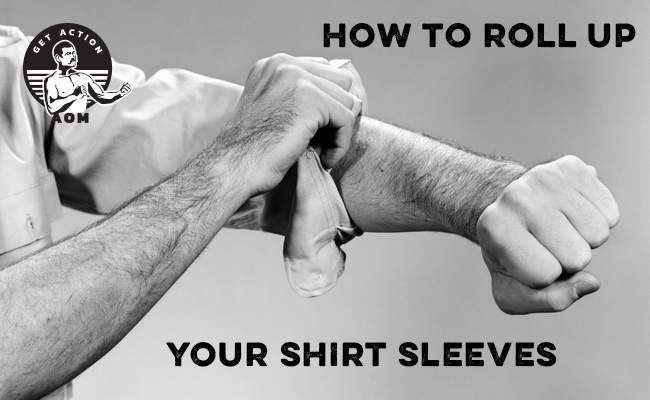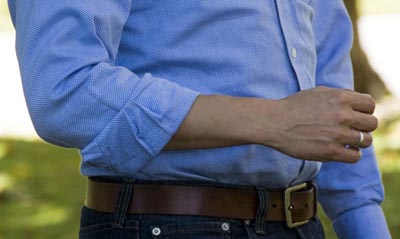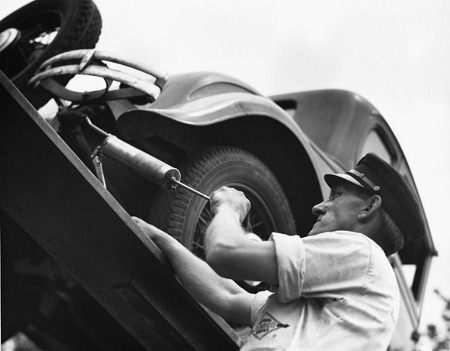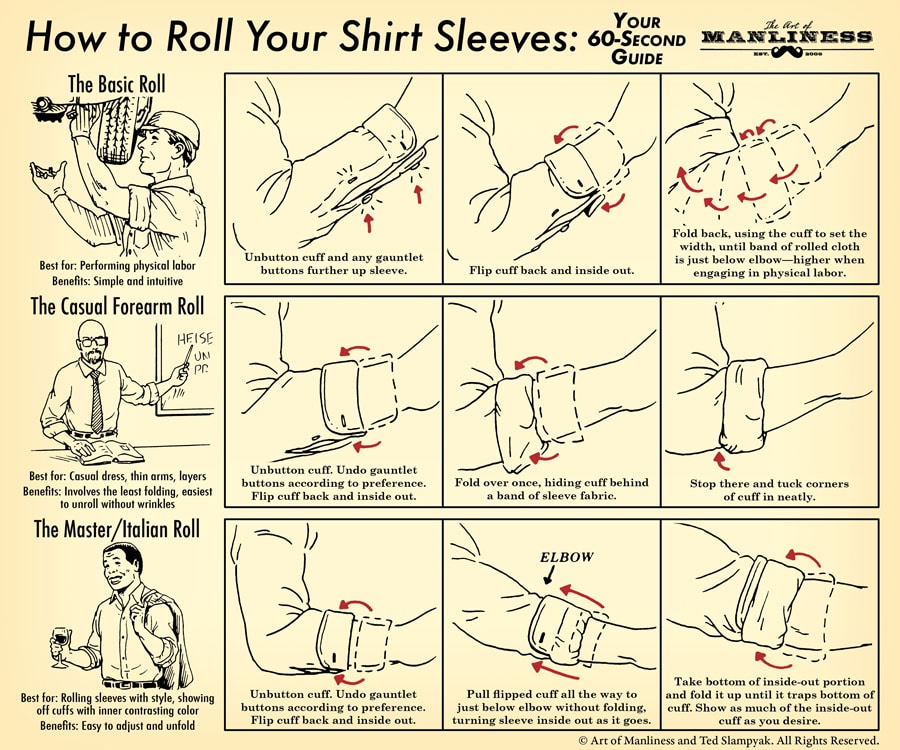
With our archives now 3,500+ articles deep, we’ve decided to republish a classic piece each Sunday to help our newer readers discover some of the best, evergreen gems from the past. This article was originally published in July 2016.
When the mercury is on the rise, so are your shirt sleeves. You can’t be going to work or special events in t-shirts or even short-sleeve button-ups, so you’re left with rolling up the sleeves of your nice dress shirt in order to stay a little bit cooler. How do you do so without looking sloppy, though, and without leaving your sleeves all wrinkled when/if they need to come back down later on?
It’s with those questions in mind that we present this ultimate, multimedia guide to when and how to roll your shirt sleeves. From video, to text, to illustrations, we’ve got you covered on this sartorial quick-change.
When Should You Roll Your Shirt Sleeves?
1. When it’s a practical necessity. Washing your hands, unclogging a toilet, doing heavy lifting, working on something dusty, and so on are all perfectly normal reasons to pull back the shirt sleeves. Anytime they might get in the way, get dirty, or get caught in a moving part — roll ’em up. Thus, it is the universal “men at work” style.
You might also roll up the sleeves of a shirt that fits well, but for the sleeves being a tad long. Keep in mind this is only a temporary solution! Be sure to get your shirt tailored for the best fit — you want to be able to roll down your sleeves with confidence when the situation calls for it!
2. When it’s hot outside. When it’s very hot and stagnant, rolling up the sleeves lets air flow directly over more of your skin, and every little bit helps. While the appropriateness of rolled sleeves varies by workplace (see below), anytime you’ve got direct sunlight on your skin, rolled sleeves are acceptable. They’re also handy when you work or live inside a place where the temperature fluctuates a great deal, as it’s nice to be able to roll them down when the A/C is blowing on you, and roll them up when the room gets stuffy.
For example, upon leaving the office for a less-formal work function or social gathering, men with their jackets off and their sleeves rolled up is classic “Happy Hour” style. And when in charge of a meeting or hosting a party, it’s a great way to signal to others that it’s okay to not worry about formalities.
This is why the question of whether rolled up sleeves at the office is appropriate comes down to the culture of a particular workplace: in a casual, informal office, rolled sleeves are often the norm, while in a very conservative corporate environment, sleeves may never leave a man’s wrists. Check out your fellow employees to see what the prevailing norm is, and even if you do work in an office where rolled sleeves prevail, I’d recommend rolling them down when meeting with an important client, or when a head honcho is visiting the office, to give yourself a more professional appearance.
To sum up: When you’re wearing a long-sleeved dress or work shirt, it’s best to wait for one of the three circumstances listed above before rolling the sleeves up. If it’s not achieving one of those effects, you risk looking sloppy or thoughtless.
Basic Sleeve-Rolling Guidelines
Before we get into the specific styles and methods of rolled sleeves, let’s outline a few general guidelines:
- You should have several inches of wrist visible, at minimum. You don’t want it to look like the shirt is too big for you and you had to roll the sleeves just to keep your hands from being swallowed.
- Your elbows should only be showing if you’re going to be working. For casual situations, keep the big, pointy, outer bone of your elbow inside the shirt.
- Suit or sports jackets usually aren’t rolled (and when they are, they are more pushed up than rolled) unless there’s an immediate and practical need. You can do it for style (if your jacket has working sleeve buttons), but be aware that it’s a fashion-forward look.
Regardless of the shirt or the style, these are always good guidelines. If you’re going to break one, have a very clear stylistic goal in mind, and double-check the look in the mirror.
3 Methods for Rolling Your Shirt Sleeves
Rolling Method #1: The Casual Forearm Roll
A casual shirt roll that is also, conveniently, the easiest to roll back down without wrinkles, as it involves the least folding:
1. Unbutton the cuff and any “gauntlet” buttons further up the sleeve.
2. Flip the cuff back and inside out.

3. Fold over once, hiding the cuff behind a band of sleeve fabric.
 4. Stop there, tucking the corners of the cuff in neatly.
4. Stop there, tucking the corners of the cuff in neatly.
The result should be a single small roll around the middle of your forearm. It doesn’t need to be tight because it’s already as far down the arm as it’s going to slide. This is a particularly good style to use when you have multiple layers involved, such as a dress shirt under a light sweater. It also looks good on men with thin arms.
Rolling Method #2: The Master Sleeve Roll
For the most stylish look, this roll gives you a deliberately casual fold that’s not quite symmetrical and can be adjusted at will:
1. Unbutton the cuff and gauntlet buttons.

2. Flip the cuff back and inside out.

3. Pull the flipped cuff all the way to just below your elbow without folding, turning the sleeve inside out as it goes.

4. Take the bottom of the inside-out portion and fold it up until it traps the bottom of the cuff.
 5. Leave as much or as little of the inside-out cuff showing above the fold as you desire.
5. Leave as much or as little of the inside-out cuff showing above the fold as you desire.
This looks particularly striking when the inside of the cuff has a contrasting lining. Let enough of the inner cuff show to clearly display the lining, making it clear that you’re deliberately showing off the shirt’s accent as well as rolling your sleeves for comfort. It is also very simple to unfold — pull and you’re done.
Rolling Method #3: The Basic Roll

This style is the most intuitive way to roll your sleeves. I only recommend this roll if you’re going to be working and need your sleeves rolled past your elbow.
- Unbutton the shirt cuff and any gauntlet buttons.
- Flip the cuff back inside out.
- Fold back, using the cuff to set the width.
- Continue folding until the band of rolled cloth is just below your elbow.
- Continue past your elbow if you’ll be engaged in physical labor.



